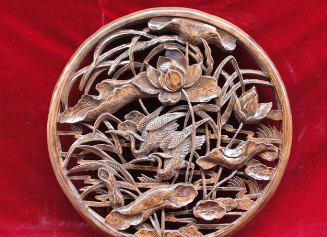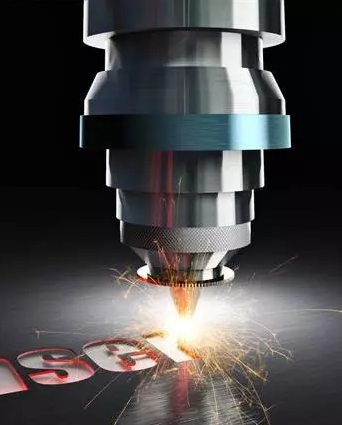The main characteristics of laser cutting
1. The workpiece deformation is small with narrow slit
The laser beam is focused into very small points of light, so that the focal point reaches a high power density. At this time, the heat input of the beam is far more than the part that is reflected, conducted or diffused by the material, and the material is quickly heated to the degree of vaporization, evaporation and formation of holes. As the light beam moves relatively linearly with the material, the holes continuously form a slit of very narrow width. The cutting edge is affected by heat very little, basically no workpiece deformation.
An auxiliary vapor suitable for the material to be cut is also added during the cutting process. When steel is cut, oxygen is used as an auxiliary vapor body to produce exothermic chemical reaction with molten metal to oxidize the material, while helping to blow away the slag in the slit. Cutting polypropylene a class of plastics using compressed air, cotton, paper and other flammable materials cutting using inert vapor body. The auxiliary vapor entering the nozzle also cools the focusing lens, preventing smoke from entering the lens seat and contaminating the lens and causing it to overheat.
- Most organic and inorganic materials can be cut by laser. In the metal processing industry, which occupies a very heavy weight in the industrial manufacturing system, many metal materials, no matter what kind of hardness it is, can be cut without deformation. Of course, for high-reflectivity materials, such as gold, silver, copper and aluminum alloys, they are also good heat transfer conductors, so laser cutting is difficult or even impossible. Laser cutting without burr, wrinkle, high precision, better than plasma cutting. For many electromechanical manufacturing industries, because the modern laser cutting system controlled by the microcomputer program can easily cut the workpiece of different shapes and sizes, it is often preferred than the punching and molding process; Although its processing speed is still slower than the die punching, it has no mold consumption, no need to repair the mold, and also saves the time to replace the mold, thereby saving the processing cost and reducing the production cost, so it is more cost-effective on the whole.
2. No contact processing
The laser beam is focused to form a very small point with a very strong energy, which has many characteristics when applied to cutting. First of all, the laser light energy is converted into amazing heat energy maintained in a very small area, which can provide (1) narrow straight edge slit; (2) The smallest heat-affected zone adjacent to the cut edge; (3) Minimal local deformation. Secondly, the laser beam does not exert any force on the workpiece, and it is a contactless cutting tool, which means that the workpiece has no mechanical deformation; (2) No tool wear, no tool conversion problem; (3) The cutting material does not need to consider its hardness, that is, the laser cutting ability is not affected by the hardness of the material to be cut, and any hardness of the material can be cut. Third, the laser beam is highly controllable, and has high adaptability and flexibility, so (1) it is convenient to combine with automation equipment and easy to realize the automation of the cutting process; (2) Because there is no restriction on the cutting workpiece, the laser beam has unlimited copying cutting ability; (3) Combined with the computer, the whole sheet can be arranged to save materials.
Adaptability and flexibility
Compared with other conventional processing methods, laser cutting has greater adaptability. First of all, compared with other thermal cutting methods, also as a thermal cutting process, other methods can not act on a very small area like a laser beam, resulting in wide incision, large heat-affected zone and obvious workpiece deformation. Lasers can cut non-metals, while other thermal cutting methods cannot.
In general, laser cutting quality can be measured by the following 6 criteria.
A. Cutting surface roughness Rz
⒉ Incision hanging slag size
Cut edge perpendicularity and slope u
Cutting edge fillet size r
5. Drag n after stripe
Pictures of flatness F
Post time: Dec-01-2023
